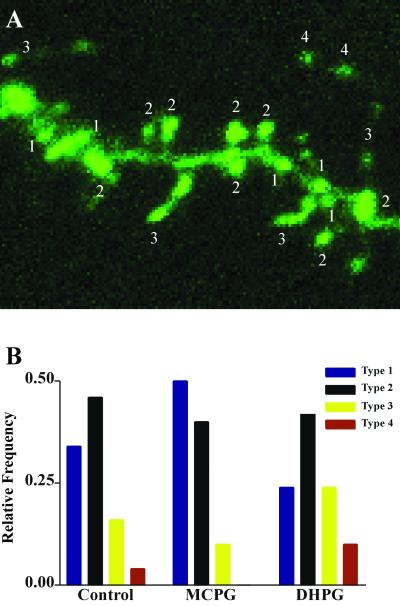Figure 4.
Example of spine types and analysis of shifts in the relative abundance of these types accompanying DHPG treatment. (A) Maximum intensity projection of an image stack taken from a DHPG-treated dentate granule cell. Four spine types are labeled, classified as described in Methods and differentiated with respect to length and shape characteristics. (B) Relative abundance of spine types in control slices and in slices treated acutely with DHPG or chronically for 2–3 days with MCPG (control and DHPG treatments also included AP5 + CNQX). Spines identified as type 3 or 4, characterized by longer, thinner profiles with smaller spine heads, are increased in frequency with DHPG treatment whereas shorter (“nubbin”) spines, type 1, are decreased. A slight shift in the opposite direction with chronic MCPG is seen in this experiment, but this result did not occur reliably enough to influence the average spine length. The proportion of type 2 spines, the classic mushroom-shaped profiles, did not change with DHPG treatment.

